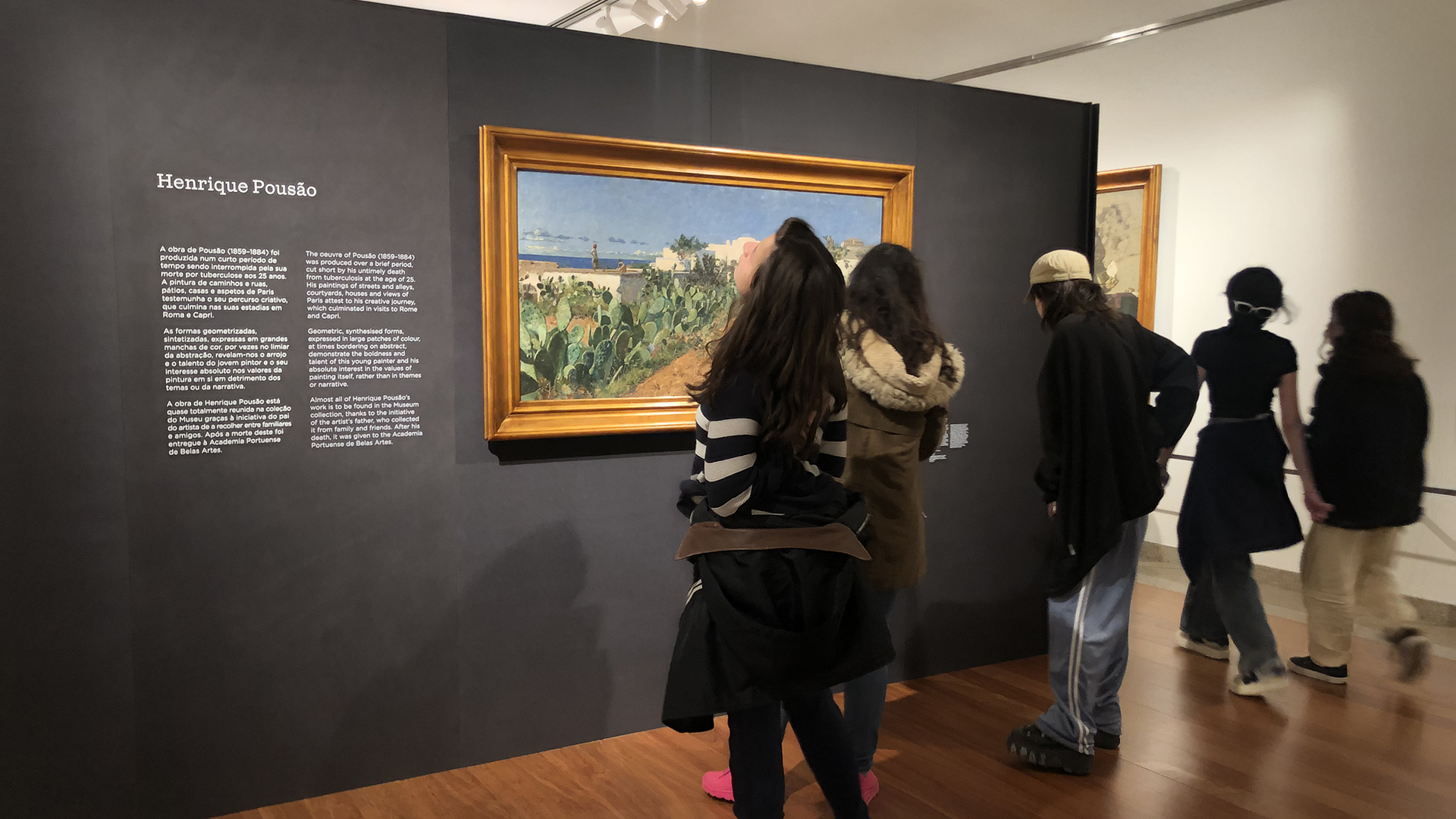Registrations
Online Registration
Target Audienc
youth and adults
Observations
Minimum of 5 and maximum of 15 participants
Value
Entry Ticket + 2 EUR
As part of the program proposed for the Visits at the Right Time, a guided tour will take place on August 25th, at 3 pm, to the gallery dedicated to the works of Henrique Pousão, with emphasis on the works classified as National Treasure.
Henrique Pousão was born on January 1, 1859, in Vila Viçosa, where he would also die, aged 25.
He entered the Porto Academy of Fine Arts, having established himself as a painter of the first naturalist generation, and was a state pensioner in France and Italy.
His work is strongly represented in the collection of the Soares dos Reis National Museum, where the works “White Houses of Capri”, “Lady Dressed in Black” and “Windows of Blue Blinds”, all classified as national treasures, can be found.
The painting of paths and streets, courtyards, houses, aspects of Paris, bears witness to his creative journey, which culminates in his stays in Rome and Capri.
The painting of paths and streets, courtyards, houses, aspects of Paris, bears witness to his creative journey, which culminates in his stays in Rome and Capri.
Henrique Pousão (1859-1884)
From an early age, his family recognized his talent, manifested mainly in pencil portraits. At the age of 10, he moved to Barcelos and, in 1872, settled in Porto. It was in this city that he attended the atelier of the painter António José da Costa to prepare for admission to the Porto Academy of Fine Arts (1872). Greatly influenced by Marques de Oliveira, who returned from Paris in 1879, Pousão won the pensioner competition, arriving in Paris at the end of 1880, accompanied by Sousa Pinto (1856 – 1939).
In Spain, he had already visited the Prado Museum and before joining Cabanel and Yvon’s studio, he also visited art galleries and museums in Paris, and discovered Impressionism, especially in 1881 in the French region of Puy-de-Dômes, village of Saint-Sauves.
That year, he moved to Rome, where he rented a studio and, in 1882, produced significant works, also in Naples and Capri. Landscapes with a poetic and vibrant chromaticism, in exercises of capturing light, genre paintings such as Cecília (MNSR), and portraits, with Lady Vestida de Preto (MNSR), created in Paris, reveal their modernity, unusual in the artistic panorama Portuguese. Victimized at the age of 25 by tuberculosis, his work acquired importance decades later.

